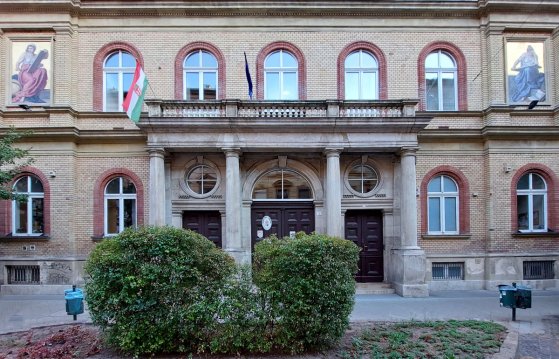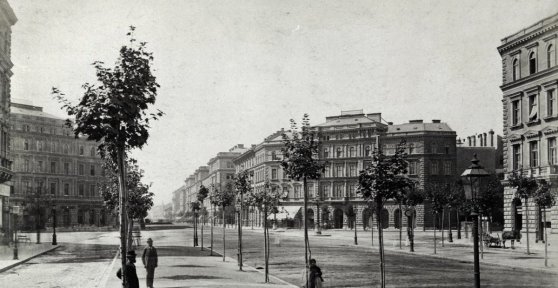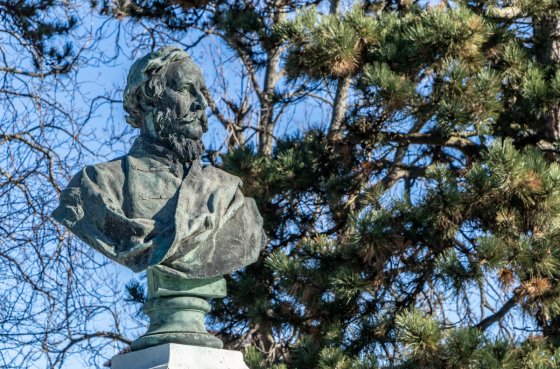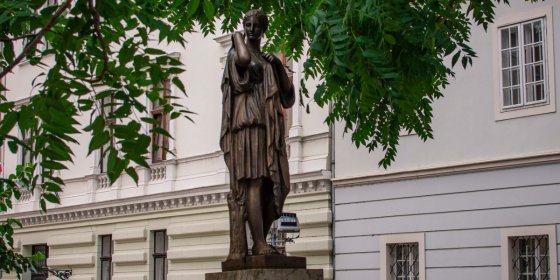 The „intertwined history” of the bridges and the city of Budapest
Which ideas and events have shaped the fate of bridges of Budapest and the cityscape? Alongside many other interesting facts, this question is also answered this newly published book by the Budapest City Archives, which introduces the history of bridges in Budapest.
The „intertwined history” of the bridges and the city of Budapest
Which ideas and events have shaped the fate of bridges of Budapest and the cityscape? Alongside many other interesting facts, this question is also answered this newly published book by the Budapest City Archives, which introduces the history of bridges in Budapest.
19th century
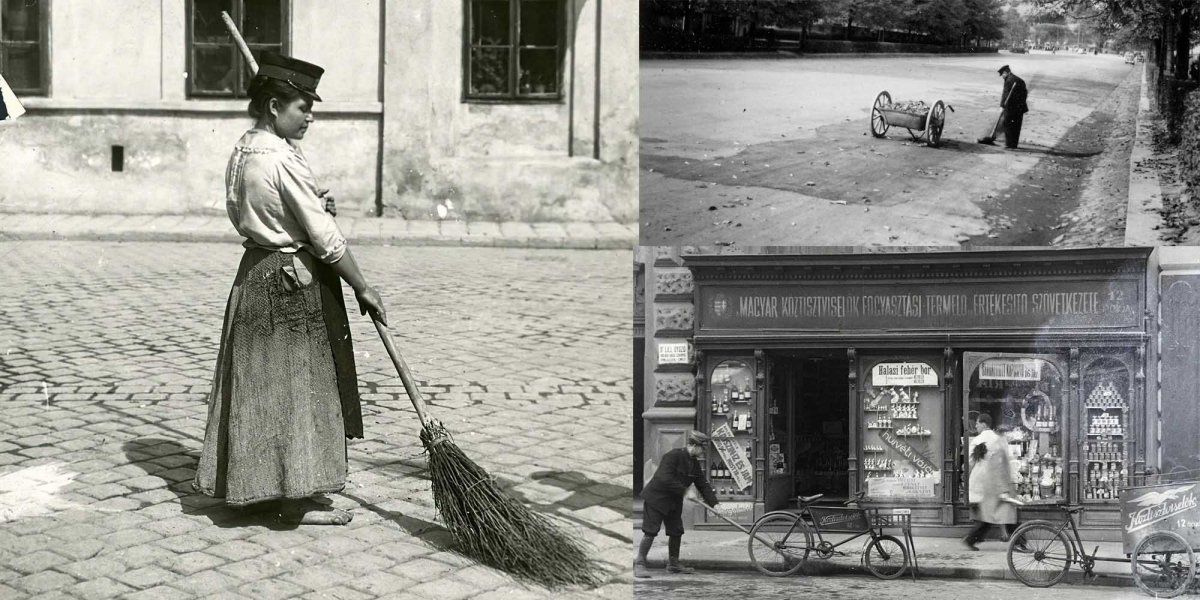 These were the public cleanliness rules in Budapest 145 years ago
These were the public cleanliness rules in Budapest 145 years ago
January 11, 2023 at 11:00 AM
Budapest adopted strict regulations 145 years ago to make the city cleaner. It was forbidden to throw garbage on the street, it became forbidden to shake the dust rag out of the street window, and it was forbidden to urinate on the street. The horse-drawn carriage stations serving transportation had to be disinfected daily, and horse manure could only be carried away in closed carts. Watering the sidewalks was abolished to protect women's clothes, and it was forbidden to throw melon rinds in the street, according to the capital's new public cleanliness regulations, which were adopted in January 1878.
Imre Madách Secondary School moved into its current home 130 years ago
October 5, 2022 at 11:00 AM
In September 1892, the 7th District State Secondary School, i.e., today's Imre Madách Secondary School, welcomed not only the new academic year but also its new home. The institution, founded in 1881, did not have its own building for more than 10 years, teaching took place on rented premises. The Minister of Religion and Public Education in charge of educational affairs, Ágoston Trefort, commissioned the architect János Bobula Sr. to prepare the plans for the secondary school. But Trefort passed away in the meantime, and the new minister had other ideas about the school building.
Its construction has caused controversy, today it is one of the most elegant parts of the capital - the Andrássy Avenue
March 9, 2022 at 10:00 AM
One hundred and fifty years ago, on 9 March 1872, the contract was signed, with which the construction of the representative avenue of Pest, Andrássy Avenue, could actually begin. The design of the route strongly divided the public, with many seeing it as a luxury investment serving the needs of the aristocracy. Soon after its opening, it became clear that the result went beyond all gentlemanly whims: it was one of the most important urban development enterprises of the second half of the 19th century.
A wise, diplomatic and friendly leader – Károly Ráth the first Lord Mayor of Budapest.
February 22, 2021 at 10:00 AM
Károly Ráth became the first Lord Mayor of the united Budapest in 1873. Although the Lord Mayor was already 52 years old when he took his post, many said he gave his whole life to serving Budapest. Educated as a lawyer, the mayor was extremely popular. He held his position for 24 years and was re-elected at every election he ran in until his death. Despite this, no public space in Budapest bears his name, nor does a statue stand to honour his memory.
The man who introduced compulsory education – 150-year anniversary on József Eötvös's death
February 2, 2021 at 2:00 PM
His statue stands on the Kossuth Monument next to the Parliament among the greatest figures of the Reform Period. His bronze statue rises proudly above a square that bears his name in the Budapest city centre. A respected secondary school was named in his honour, and the house named after his novel The Carthusian still stands on Svábhegy. He was also the politician to introduce compulsory education. The writer, politician and statesman, József Eötvös died 150 years ago. A leading figure of the Reform Period and subsequent decades, his policies are as much part of his oeuvre as his novels. Visit the sites that memorialise the nobleman in Budapest.
A wandering Greek goddess that found a home next to Magdolna Tower – The Hebe Fountain has stood at several points of Buda Castle
August 17, 2020 at 9:00 AM
The Hebe Fountain in Buda Castle, also known as the Artemis Fountain, now stands in an intimate little unnamed square at the foot of the Magdolna Tower, at the northern end of Úri Street. It seems that this 19th century well statue, previously erected in two other places in the Castle, has found its final home. For various reasons, the Greek goddess has been moved from two other locations before. The nomadic statue also has two names: after its inauguration, it was identified from Greek mythology as the figure of Hebe, when in fact, it was a copy of a statue of Artemis in Paris.
More articles
 The „intertwined history” of the bridges and the city of Budapest
Which ideas and events have shaped the fate of bridges of Budapest and the cityscape? Alongside many other interesting facts, this question is also answered this newly published book by the Budapest City Archives, which introduces the history of bridges in Budapest.
The „intertwined history” of the bridges and the city of Budapest
Which ideas and events have shaped the fate of bridges of Budapest and the cityscape? Alongside many other interesting facts, this question is also answered this newly published book by the Budapest City Archives, which introduces the history of bridges in Budapest.
 The Bridge Report, which brought a turning point in the history of Budapest
A travel report that changed the history of Pest and Buda, as well as Hungary. The little book contributed to the change of half a thousand years of legal customs and the implementation of an investment of unprecedented size and technical quality. This book was The Bridge Report [Hídjelentés in Hungarian].
The Bridge Report, which brought a turning point in the history of Budapest
A travel report that changed the history of Pest and Buda, as well as Hungary. The little book contributed to the change of half a thousand years of legal customs and the implementation of an investment of unprecedented size and technical quality. This book was The Bridge Report [Hídjelentés in Hungarian].
 Drama on the university wall - The heroic monument was planned 95 years ago
In the constant hustle and bustle of the Egyetem Square in Pest, the students may not even notice the monument that decorates the short section of wall between the church and the central building of ELTE. However, it commemorates their predecessors, the heroes who fought for their country in World War I, and those who heroically helped them. The first design of the dramatically collapsing soldier was born in 1928, ninety-five years ago.
Drama on the university wall - The heroic monument was planned 95 years ago
In the constant hustle and bustle of the Egyetem Square in Pest, the students may not even notice the monument that decorates the short section of wall between the church and the central building of ELTE. However, it commemorates their predecessors, the heroes who fought for their country in World War I, and those who heroically helped them. The first design of the dramatically collapsing soldier was born in 1928, ninety-five years ago.

